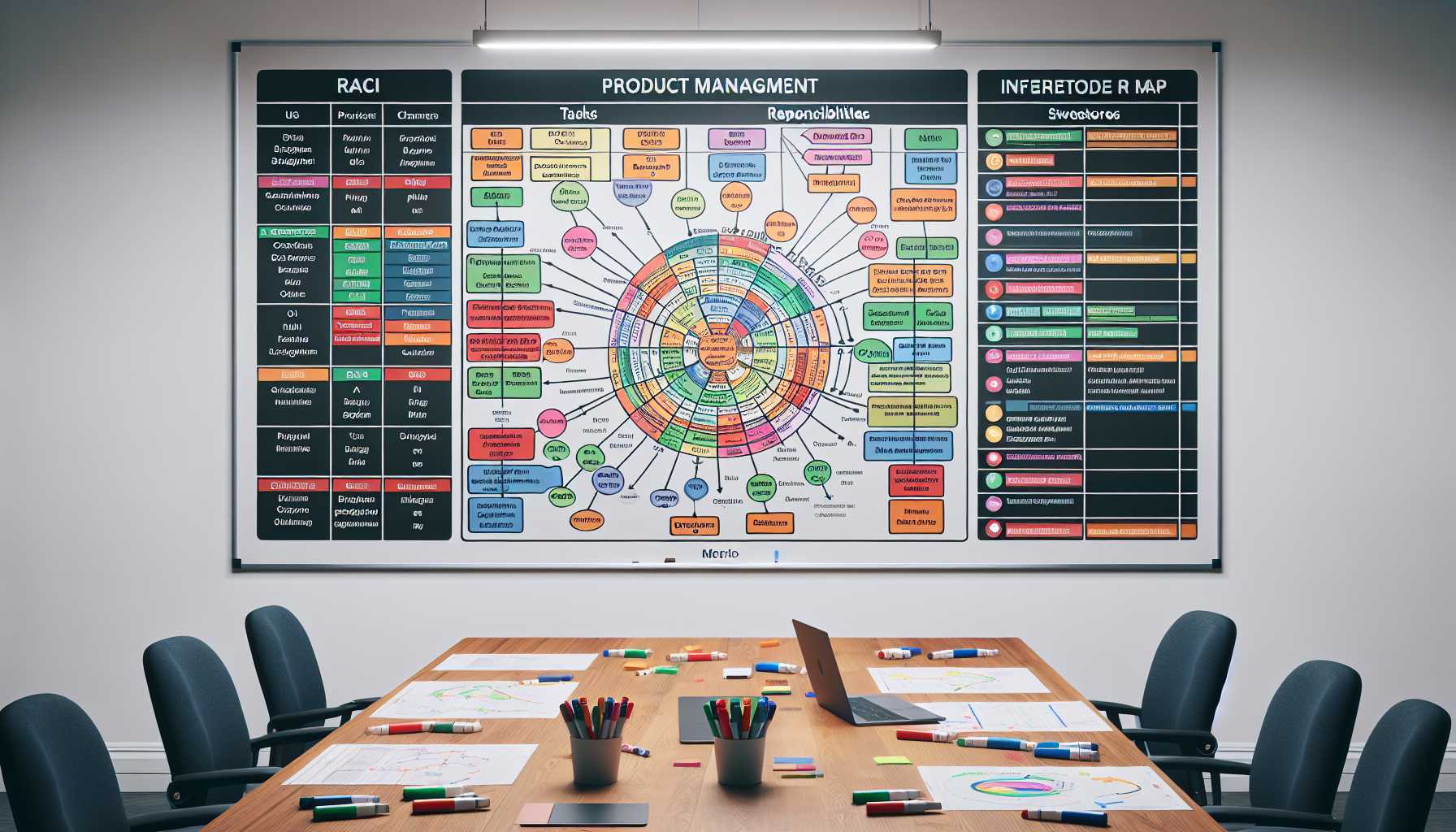Welcome to another installment on our product management deep dive. Today, we tackle an aspect of product management that’s as nuanced as it is critical—managing stakeholder expectations in product development. As seasoned product leaders, we know that stakeholder management is not just about meeting demands, it’s about guiding expectations to align with our product vision and capabilities.
The Stakeholder Landscape
In my experience, stakeholders come in all shapes and sizes—executives, investors, customers, end-users, marketing, sales teams, and the list goes on. Each group has their unique perspective, priorities, and expectations. Balancing these while pushing forward a coherent product strategy can feel like walking a tightrope.
Frameworks to Guide the Journey
To navigate this complex environment, we turn to frameworks designed to align and set expectations. Two that have served me well are the RACI Matrix (Responsible, Accountable, Consulted, Informed) and the Stakeholder Map.
- RACI Matrix: I’ve used the RACI Matrix to clarify roles and responsibilities, ensuring that everyone involved understands their part in the decision-making process. It distinguishes between those executing tasks, the decision maker(s), those providing input, and those who need to stay informed.
- Stakeholder Map: Creating a visual representation of all your stakeholders—sorted by influence and interest—helps tailor communication strategies. A stakeholder map keeps the product team focused on managing the most impactful relationships effectively.
Personal Experiences and Success Stories
In one of my previous roles, I was charged with delivering a SaaS platform that had multiple internal and external stakeholders. Using the Stakeholder Map, I identified early on that our sales team and a handful of key clients were critical players. Through regular, structured updates and demonstrations, I was able to align their expectations with our Agile development process. This led to these primary stakeholders becoming our most significant advocates, easing the pressure from others and fostering a more supportive environment.
Communication: The Golden Thread
Clear, consistent communication is the golden thread that ties successful stakeholder management together. Whether employing formal reports, product dashboards, or casual coffee chats, keeping stakeholders informed and involved paves the way for trust and buy-in.
- Regular Updates: Implementing a recurring stakeholder newsletter and maintaining a feature roadmapping tool ensured everyone was up to date with our progress, challenges, and pivots.
- Feedback Loops: Encouraging active feedback during product demos and quarterly business reviews not only improved our offering but also increased stakeholder ownership of the product.
Aligning Expectations with Reality
While we aim to please, it’s paramount to keep expectations realistic. Overpromising leads to disappointment, and an underwhelmed stakeholder can derail even the most thoughtfully planned product development. It’s a delicate mix of ambition and feasibility that maintains the stakeholder’s confidence without setting the stage for failure.
Leveraging Data-Driven Decision Making
One invaluable approach to maintaining realistic expectations is adopting a data-driven decision-making process. When stakeholders question the direction or progress of a product, presenting data that supports your strategy can defuse tension. Moreover, it instills confidence in your decisions and the integrity of the product development lifecycle.
Conflict Resolution and Negotiation
Disagreements with stakeholders are inevitable, but they don’t always have to end in stalemate or concession. Employing negotiation techniques such as interest-based relational (IBR) approaches can help find common ground without compromising the product vision. My rule of thumb here has always been to focus on shared goals and build solutions from that common foundation.
In Summary
Managing stakeholder expectations is never static; it’s an ongoing journey that changes with every new project. However, by employing frameworks like the RACI Matrix and Stakeholder Map, maintaining clear communication, setting realistic expectations, making decisions rooted in data, and developing negotiation strategies, we can steer these nuanced relationships towards a harmonious and successful outcome.
We’d love to hear about your experiences and tips on stakeholder management. Until next time, keep navigating and balancing the challenging yet rewarding world of product development.
p>

